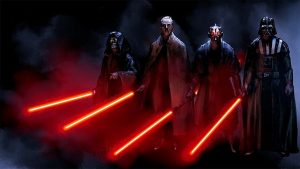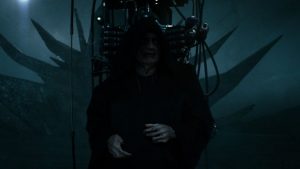SPOILERS FOR THE MANDALORIAN AHEAD!
Today’s episode of The Mandalorian was practically overflowing with Star Wars deep lore, including several big reveals, Easter eggs, and hints and teases of even more exciting things to come. But whereas many of those things (like Ahsoka’s future, and the location of Grand Admiral Thrawn) may be explored in spinoff series’ down the line, the true identity of Baby Yoda – sorry, Grogu – and the details of his mysterious backstory are almost sure to be explored in The Mandalorian itself. So let’s discuss the new biggest mystery surrounding Grogu’s past: who saved him from Order 66.
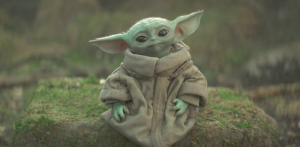
Thanks to Ahsoka Tano, we now know that Grogu was raised in the Jedi Temple on Coruscant in the last years of the Old Republic. He was mentored by many Jedi Masters, and presumably became fairly strong in the Force – but in the intervening years between the fall of the Jedi Order and his reappearance in The Mandalorian shortly after the fall of the Empire, he has somehow forgotten much of his Jedi training and distanced himself from the Force. Ahsoka explains that this is because Grogu is afraid of something; probably the trauma of having survived the Jedi Purge and the execution of Order 66, when Emperor Palpatine turned on the Jedi and slaughtered all but a few in a massive bloodbath. In one of Revenge Of The Sith‘s most memorable sequences, Palpatine’s disciple Anakin Skywalker stormed the Jedi Temple and murdered pretty much everybody, including children. But somehow, Grogu survived the Purge, thanks to an unnamed rescuer who got him out of the Temple and kept him hidden from Anakin, Palpatine, and the long arm of the Empire for years. While the Emperor continued his hunt for Jedi survivors with the help of Darth Vader and a small army of Jedi traitors known as Inquisitors, Grogu remained alone in a secret location until somehow being brought to the attention of ex-Imperials in the aftermath of the Empire’s collapse. The rest is history.
But now, let’s look at a few characters who could have been Grogu’s secret savior (and one or two who definitely weren’t) – and who could be very important players in The Mandalorian‘s future storylines, as we continue to explore the child’s backstory and purpose.
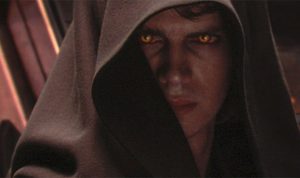
6: Anakin Skywalker. This is a bizarre theory I saw making the rounds on social media, though it seems very out of character for young Skywalker. In Revenge Of The Sith, we saw Anakin go from senselessly murdering children in the Jedi Temple to mowing down an entire Separatist council, Force-choking his wife, and trying to kill his mentor. I’m not sure there’s any space in between those events for Anakin to suddenly have a change of heart, randomly decide to spare a single padawan‘s life, and then go back to being an out-of-control killing machine. In his later years, as he witnessed first-hand the horrors he had helped to bring about, Anakin quietly (and sometimes subconsciously) started helping his enemies in small, secretive ways – such as destroying a Jedi holocron that would have supplied Palpatine with the names of every Force-sensitive child in the galaxy: which means that, technically, older Anakin actually did save Grogu’s life. But young Anakin? Not a chance.
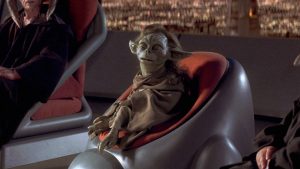
5: Yaddle. The Mandalorian introduced a new complication in the story of Yoda’s female counterpart, Jedi Master Yaddle, with Ahsoka Tano stating definitively that, in all her time as a Jedi, she’s only ever known one other member of Grogu’s species, besides Grogu himself – Yoda. It’s a big slap in the face to all of Yaddle’s fans, who are still waiting for her to return. She hasn’t been seen in live-action since her very first appearance in The Phantom Menace, and it’s been way too long if you ask me: especially since the current canon doesn’t provide any information about Yaddle’s fate in the Purge (and, in fact, hints that she survived). So why doesn’t Ahsoka know about her? Well, Yaddle is believed to have retired from her post on the Jedi High Council before Attack Of The Clones, meaning that Ahsoka might have never come into contact with her if she left the Temple completely. But if that’s the case, that means Yaddle probably wasn’t anywhere nearby when Anakin attacked and Grogu needed saving. So I think we have to rule her out as a likely option, but take comfort in the fact that it means Yaddle’s survival is even more plausible!
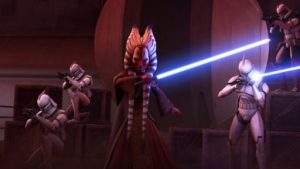
4: Shaak Ti. I feel kind of sorry for Master Shaak Ti – who, coincidentally, filled Yaddle’s seat on the Jedi High Council. Ti was given a very important role in the Jedi hierarchy, overseeing the training of the Clone armies on Kamino. But in this role, she failed to thoroughly examine the nefarious secret behind the purpose of the inhibitor chips hidden inside each Clone soldier, despite all the warning signs. It would have been cruelly poetic if she had been killed by one of those same Clones at the same time as most of her fellow Jedi, but she was actually murdered by Anakin Skywalker himself: impaled while meditating in the Jedi Temple. That would seem to rule her out as a potential Grogu savior, but she did record a final hologram message before her death telling any surviving Jedi to rise up and rebuild the Order – so clearly, she knew what was going on before Anakin got to her. Could she have had time to rescue Grogu in that brief space of time and make up for many of her failings? Possibly. I doubt it, but never say never.
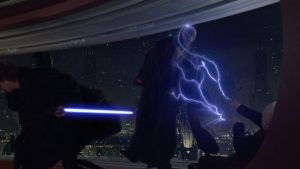
3: Mace Windu. I know what you’re thinking: isn’t Mace Windu literally one of the first Jedi to die in Order 66? Doesn’t the Emperor personally kill him, with help from Anakin? Well…maybe. Windu’s death is something that’s been debated in the fandom recently, with some (including Samuel L. Jackson himself, and George Lucas) theorizing that such a powerful Jedi could have withstood losing a limb, being electrocuted by Force lightning, and then getting thrown out a skyscraper window. This is Samuel L. Jackson we’re talking about here, so I’m prepared to buy that. And if he did survive his apparent death, maybe he could have gotten back to the Jedi Temple before Anakin and rescued Grogu: though I’d be interested to hear his reasoning for why only Grogu warranted saving. This theory raises a lot of questions. Too many, if you ask me. But if it means we get SLJ/Baby Yoda content, I’m prepared to forgive even the most random of retcons.
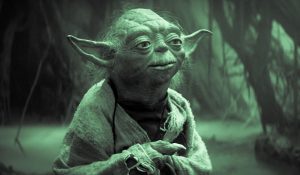
2: Yoda. We still don’t know whether Yoda and Grogu are related in any way, despite being two of only three known members of their unidentified and incredibly secretive species, but Yoda would definitely have known who Grogu was during the child’s time in the Jedi Temple. He probably also selected some of Grogu’s Masters, and might have taken a role in mentoring the child – when Ahsoka mentioned Yoda’s name in her conversation with Din Djarin, Grogu’s ears immediately perked up, indicating that he recognized the name, at least. Yoda was one of the wisest and most far-seeing Jedi: if Grogu has any huge relevance to the overall story of Star Wars, it wouldn’t be surprising if Yoda knew that well in advance, and decided to protect the child from harm so he could one day grow up to become…whoever he becomes. Yoda did visit the Jedi Temple the morning after Anakin’s attack, so he could have found Grogu, if the child had hidden during the assault on the Temple. But why wouldn’t he have taken Grogu with him to hide on Dagobah?
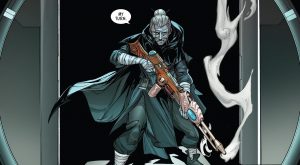
1: Jocasta Nu. If anybody had the motive and means of smuggling Grogu out of the Jedi Temple, it was Jocasta Nu. The elderly Jedi librarian who briefly interacted with Obi-Wan Kenobi in Attack Of The Clones may not have been of much assistance when trying to track down Kamino, but she became instrumental in rescuing and preserving Jedi knowledge after the Empire rose to power. According to the new Disney canon, she was able to escape from the Jedi Temple on the night of Anakin’s attack with a treasure trove of books, holocrons, artifacts – and potentially one stray padawan? Nu tried her best to locate other surviving Jedi, particularly Force-sensitive children; a list of whose names she kept in a valuable holocron. Although Darth Vader eventually killed her, she didn’t fail entirely in her goal: Vader destroyed the holocron without telling Emperor Palpatine of its existence, and the information Nu snuck out of the Temple provided the blueprint for Luke Skywalker’s later attempts to rebuild the Jedi Order. And it’s possible that, if she was Grogu’s savior, she may have played an even more important role in saving the galaxy.
As you can probably tell, there aren’t a whole lot of Jedi who could have saved Grogu: some of the ones on this list were probably either too far gone to the Dark Side, too far away, or just too dead, to help out. It’s possible this is a completely unimportant conversation, too: maybe Grogu was rescued by someone random, a Jedi we’ve never met before in any story. But I don’t think so. The way this reveal was set up – combined with the revelation that more Jedi are coming in future episodes of The Mandalorian – makes me think we will learn the identity of Grogu’s savior, and it will be someone we already know. It also makes me think we’ll be getting flashbacks to the attack on the Jedi Temple: just like the flashbacks we saw of Din Djarin’s own childhood trauma, and the slaughter of his people by Separatist battle droids, in The Mandalorian‘s first season.
So what do you think? Who saved Grogu? Somebody on this list? Somebody completely different? Share your own thoughts, theories, and opinions, in the comments below!

